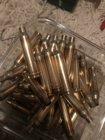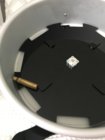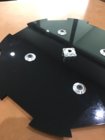One page "1" of this tread, the part I called out for the power relay is a DPST ""contractor" relay. It connects/disconnects both the + and - power leads at the same time. The one I used has a 110 volt AC coil. If you wish it can be ordered with a 12 volt DC coil. Using a "car" relay, IMHO is unwise in that it was not designed for the higher contact voltages and the contacts are too close for that voltage. With a contractor relay there is greater distance between the contacts. In the 2 + years since I have built my annealer, I have put 1,000's of cases through it and have never had a problem with the contractor relay. Last year one of the builders was having a problem with arcing in the "car" relay he was using. I opened my unit and took the cover off the contractor relay to check for arcing. There was no sign of any arcing.
Some builders have used Solid State Relays. I do not have a part number for that. Somewhere in this thread there is a schematic for that change.
Just remember to add the correct diode/varistor across the coil of the relay.
Hope this helps
Gina
PS I like the click/clack that the relay makes during each annealing cycle...
Some builders have used Solid State Relays. I do not have a part number for that. Somewhere in this thread there is a schematic for that change.
Just remember to add the correct diode/varistor across the coil of the relay.
Hope this helps
Gina
PS I like the click/clack that the relay makes during each annealing cycle...














